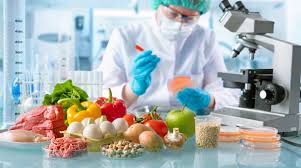 Food is fundamentally composed of chemicals – molecules that provide energy, structure, and function to our bodies.
Food is fundamentally composed of chemicals – molecules that provide energy, structure, and function to our bodies.
When we eat, we’re consuming complex mixtures of organic and inorganic compounds that our digestive system breaks down and utilizes.
The major chemical categories with distinct structures in food include:
Macronutrients – These are the primary chemical building blocks.
Carbohydrates are chains of sugar molecules like glucose and fructose.
Proteins are sequences of amino acids linked together.
Fats are triglycerides composed of glycerol and fatty acid chains.
Each category has distinct molecular structures that determine how our bodies process them.
Micronutrients – Vitamins are organic molecules with specific chemical functions, like vitamin C (ascorbic acid) acting as an antioxidant, or B vitamins serving as enzyme cofactors.
Minerals are inorganic elements like iron, calcium, and zinc that participate in various biochemical processes.
Water makes up 50-90% of most foods and is essential for nearly every biological reaction.
Secondary compounds include flavor molecules, pigments, and natural preservatives
It’s the capsaicin that makes peppers hot, the anthocyanins that color berries purple, and the caffeine in coffee are all distinct chemical compounds with specific molecular structures.
The chemicals in food concern often are additives and processing aids.
While some are synthetic, many are identical to compounds found naturally.
Citric acid, whether extracted from citrus fruits or produced by fermentation, has the same molecular structure and function.
Heat breaks down proteins, caramelizes sugars, and creates new flavor compounds through chemical reactions.
Food is chemistry, from the simplest apple to the most complex prepared dish.
Individual foods contain thousands of compounds.
A simple apple contains over 300 identified chemical compounds, including sugars, acids, esters, phenolic compounds, and volatile aromatics.
Coffee has more than 800 known chemical compounds that contribute to its flavor and aroma.
Wine contains over 1,000 different molecules.
Complex foods reach even higher numbers.
Chocolate contains more than 600 identified compounds.
A typical tomato has around 400 chemical constituents.
Even something as basic as bread contains hundreds of compounds formed through fermentation and baking reactions.
The human diet overall exposes us to tens of thousands of different chemical compounds.
Food scientists estimate that we consume somewhere between 25,000-80,000 different naturally occurring chemicals in our normal diet, depending on dietary diversity.
Many food chemicals remain unidentified, as scientists have only characterized a fraction of the compounds present in foods.
New molecules are still being discovered regularly.
Cooking, fermentation, and food processing generate additional compounds through chemical reactions.
The browning in cooked foods (Maillard reaction) produces hundreds of new molecules.
The chemical complexity of food is how foods provide nutrition, flavor, color, and texture.:The vast majority of these compounds are harmless and many are beneficial, contributing to the nutritional and sensory qualities that make food both nourishing and enjoyable.
